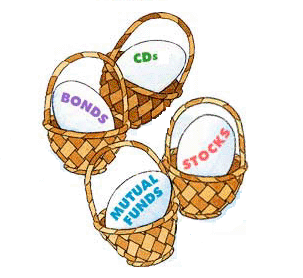Duration is a significant measurement of how sensitivity the change in price of a bond in the change of interest rate. It is broadly linked to the length of time before the bond is mature. Duration assists investors during the investment decision making process by expressing the relation between interest rate and price variables of the bond. Therefore, duration is useful measurement for investors because it protects investment from interest rate risk. When the duration of bond is lower that means investors can obtain the cash earlier and reinvest it at prevailing interest rate. As a result, the lower the duration of a bond, the lesser sensitive changes in the interest rate.… Read the rest
Investment Options
Investments when entire Stock Market is Under or Over Valued
Should management proceed with investing in a project with a satisfactory NPV (Net Present Value) if it has sufficient funds to do so, and if (a) the entire stock market is significantly undervalued and may well rise by 25 or 30% over the next year, or (b) the entire stock market is significantly overvalued and may well fall by 25 or 30% over the next year?
In case (a), it could be argued that management should postpone the investment for a year, and invest the cash in a general portfolio of shares, realize them after a year, then take up the postponed investment, and use the capital gain either for future investment or a special dividend payment to shareholders.… Read the rest
Formula Plans in Portfolio Management
The investor uses formula plans to facilitate him in making investment decisions for the future by exploiting the fluctuations in prices. The formula plans have sketched the basic rules and regulations for purchasing and selling of investments. The formula plans make the average investors superior to others. These formula plans in portfolio management are based on the fact that the investors will not have the problem of forecasting fluctuation in stock prices and will continue to act according to formula.
So, formula plans are a type of investment strategy that makes use of pre-determined rules for the nature and timing of change in one’s investment portfolio as the market rises or falls.… Read the rest
Different Types of Investment Portfolios
The set of all securities held by an investor is called his investment portfolio. The investment portfolio may contain just one security. However, since in general no one puts all one’s eggs in one basket, it will contain several securities. Such an investment portfolio is knows as a diversified portfolio.
An investment portfolio can be classified in the light of following factors such as objectives, risk levels and the level of diversification.
Investment Portfolios based on ObjectivesOn the basis of objectives sought, a portfolio can be income portfolio, growth portfolio, mixed portfolio, tax savings portfolio or liquidity portfolio.… Read the rest
Inputs for Investment Portfolio Construction
Investment portfolio is a composition of investments with the purpose, of maximizing return and minimizing risk. What individual investments would constitute the composition depends, in the first place, on the goals of the investment portfolio. One of the goal of the investment portfolio is return maximization. To achieve this, a choice of individual investment securities for inclusion in the portfolio is made and the return and risk of such individual investment securities are relevant inputs for investment portfolio construction. Thus, portfolio goal and return and risk of individual securities included in the portfolio are the inputs for investment portfolio construction.… Read the rest
Sub Categories of Active Equity Management
Some of the major sub categories of the two major style of active equity management (top down and bottom up) are listed below;
- Growth managers: Growth managers can be classified as either top-down or bottom-up. The growth managers are either divided into large capitalization or small capitalization. The growth managers buy securities that are typically selling at relatively high P/E ratios, due to high earnings growth rate, with the expectation of continued high earnings growth. The portfolios are characterized by high P/E ratios, high returns, and relatively low dividend yields.
- Market timers: The market timer is typically a set category of top-down investment style and comes in many varieties.
